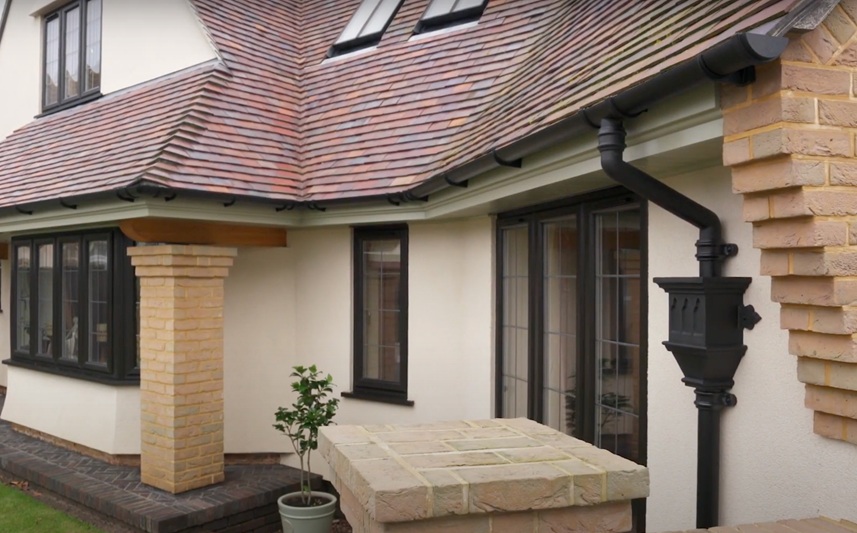
Mark Garrard, a Specification Manager at Brett Martin tells Professional Builder how simple modern cast iron effect rainwater systems, such as Cascade, are to install
As charming as original cast iron rainwater systems may be, they are heavy, awkward and difficult to install. So why go to the trouble, effort and additional expense when it’s nigh on impossible to tell the original systems and their modern equivalents apart?
As you’d expect, the modern systems are much more cost-effective when compared to cast iron. And yes, they help to create a feature of the rainwater system of any property. However, the real win for builders is the ease with which they can be installed.
Before going through the guide to installing rainwater systems, I wanted to mention two key usages of cast iron effect systems: for traditionally styled new builds and also for restoration of period properties.
For new builds and renovations
For new houses the system brings all the charm and heritage with three gutter profiles to choose from and round or square downpipe options, depending on gutter choice. There are options to personalise projects with a selection of hopper styles, including dated hoppers and a choice of heritage colours, meaning each new build can achieve a truly unique character.
When it comes to renovations, our system is a sympathetic design that provides an attractive, cost-effective alternative to cast iron rainwater solutions for period properties. Having been used on Grade II listed buildings and in conservation areas, Cascade provides an effective replacement for the original material, and can also work alongside existing cast iron products to provide a consistent design aesthetic for a sensitive restoration project.
Seven steps when installing rainwater systems
Step 1 – Planning and preparation
Plan your installation carefully. Ensure you have the right tools for the job and relevant personal protection.
Step 2 – Fitting running outlets
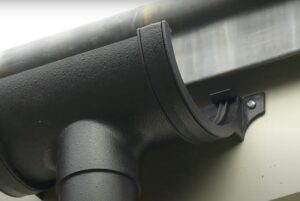
Fix running outlets above the drains or gullies where the water will drain into using 25 mm x 5 mm corrosion-resistant screws.
Step 3 – Calculating the fall
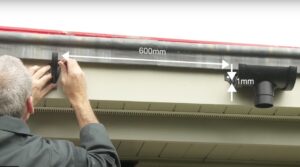
To allow for good steady rainwater run-off, guttering should be installed with a downward fall towards the rainwater outlet – 1 mm for every 600 mm. The running outlet should be at the lowest point on the gutter run.
Step 4 – Fitting fascia brackets

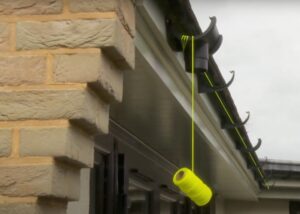
Fix the first fascia bracket furthest from the outlet at a position on the fascia to allow for the required fall. This should be no more than 100 mm from the end of the fascia board. Stretch a line taut between the fixed outlet and fascia bracket to establish a straight gutter line. Fascia brackets should be fitted to the fascia board at equal intervals. A union bracket should be used where two gutter lengths are joined. Gutter supports should be spaced no more than 900 mm apart – or 600 mm in areas of heavy snow.
Step 5 – Cutting the guttering to size
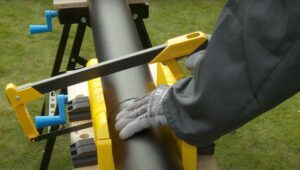
Cut to length using a saw and then use a file to remove any burrs from sawn ends. When cutting the guttering to size, make allowances in length to fit the expansion lines that are marked in the fittings.
Step 6 – Fitting the guttering
Lubricate the seals using silicone spray lubricant. Each length of gutter should be placed into position with the back edge under each fitting. Rotate down and then click the front edge into place over the top edge of the gutter.
Step 7 – Fitting downpipes
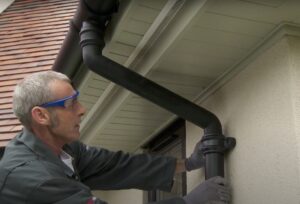
If required, fit an offset between the running outlet and the downpipe. Fit the downpipe to the offset. To allow for expansion, ensure each connection is retracted at least 5 mm from the receiving socket before fixing to the wall. Use a spirit level to check vertical alignment. Mark the walls using the holes in the lugs of the socketed downpipes as guides. Then drill, plug and fix the downpipe using fixings. Water test the system to ensure no adjustments to the fall are necessary and all connections to the fall are fitted correctly.
When a traditional aesthetic is a prerequisite, the right drainage system can be the difference between design success and failure. As budgets are increasingly stretched and tight deadlines dictate product specifications, specifiers must be aware of every product’s cost – in both materials and labour. With a price tag in line with modern construction, and an appearance that blends the past with the present, Cascade is a plastic rainwater system that fits the bill.
For further information on Brett Martin’s Cascade cast iron effect rainwater system click here






